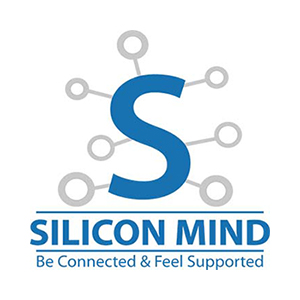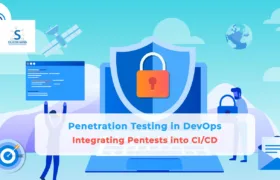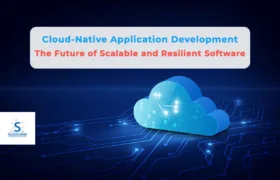Mastering GitOps represents a pivotal step towards optimizing your CI/CD workflow. GitOps, a paradigm that leverages Git repositories as the single source of truth for infrastructure and deployment configurations, offers a streamlined approach to managing continuous integration and continuous delivery processes. By seamlessly integrating version control with automated workflows, GitOps empowers teams to achieve greater efficiency, transparency, and reliability in their development pipelines.
This blog delves into the core principles of GitOps and its transformative impact on modern software development practices. From understanding the fundamentals of version control using Git to harnessing the power of declarative configuration management, we will explore how adopting GitOps methodologies can revolutionize your CI/CD processes. Discover best practices for implementing GitOps workflows, optimizing automation through tools like Kubernetes, and maintaining synchronization between code changes and deployments.
Join us on this journey to unravel the intricacies of GitOps and unlock the potential it holds for enhancing your software delivery lifecycle. Whether you’re a seasoned developer looking to enhance your workflows or a team seeking to streamline collaboration and deployment cycles, this exploration of mastering GitOps promises valuable insights and actionable strategies to elevate your CI/CD pipeline to new heights of efficiency and effectiveness.
Understanding GitOps and its Importance in CI/CD Workflow
GitOps is a modern approach to manage infrastructure and applications. It uses Git as the single source of truth. By integrating GitOps into a CI/CD workflow, teams can achieve greater consistency and traceability. It ensures that deployments are reliable and repeatable.
The benefits are clear. With GitOps, changes are version-controlled and peer-reviewed. This results in fewer errors and faster recovery times. Automation plays a key role, reducing manual intervention.
This approach ensures that the desired system state matches the actual state. By automating processes through continuous integration and continuous deployment (CI/CD), GitOps minimizes manual interventions. All configurations are declarative, making them explicit and human-readable.
Kubernetes environments especially benefit from GitOps. Deployments become more manageable and repeatable. As a result, teams can focus on writing code instead of handling complex infrastructure setups, boosting efficiency and reliability.
Benefits of GitOps in CI/CD
GitOps brings numerous benefits to CI/CD workflows. By using Git as the single source of truth, it ensures consistent and reliable deployments. Version control becomes straightforward, allowing easy tracking of changes and rollbacks if needed.
Automation reduces manual errors and speeds up the deployment process. With a declarative approach, configurations are clear and human-readable.
Peer reviews enhance code quality and security. Kubernetes environments particularly benefit, as GitOps simplifies complex setups.
Collaboration improves, as everyone works on the same versioned repository.
Overall, GitOps increases efficiency, reliability, and predictability in CI/CD workflows, making it a valuable methodology for modern software development.
Implementing GitOps with Kubernetes
Setting up Kubernetes for GitOps begins with configuring your cluster to align with GitOps principles. Admins should ensure that every configuration change is tracked in a Git repository. This approach maintains a consistent state across environments.
This automation minimizes manual interventions and errors. Kubernetes benefits greatly from this system due to its declarative nature. With GitOps, disaster recovery becomes more straightforward as the desired state is always recorded in Git. This ensures reliability and efficiency in managing Kubernetes deployments.
Setting up Kubernetes for GitOps
To set up Kubernetes for GitOps, admins should start by installing and configuring GitOps tools like Argo CD or Flux. These tools will watch the Git repositories for changes. The cluster needs to be configured to automatically apply these changes.
Next, the team should create Git repositories that hold the desired state of their infrastructure and applications. It’s crucial to implement strict access controls. Only approved changes should be merged into the main branch.
Additionally, setting up webhooks between the Git repository and the Kubernetes cluster ensures real-time updates. Monitoring tools can track the deployment process, providing feedback for further optimization.
Using GitOps tools for Kubernetes deployments
Argo CD and Flux are popular choices for GitOps in Kubernetes deployments. Both tools continuously monitor repositories for changes. When a change is detected, they reconcile the cluster state automatically. This ensures deployments remain consistent with the declared state in the repository.
Admins can define infrastructure configurations and application manifests in these repositories. These tools offer detailed dashboards for visualizing deployment status and history.
Rollbacks become simple with version-controlled environment states. Also, access controls ensure only authorized changes get deployed. This leads to increased security and reliability.
In summary, GitOps tools streamline Kubernetes deployments by automating and simplifying cluster management.

Embarking on the journey of optimizing your CI/CD workflow with GitOps requires a trusted partner who can navigate the complexities of modern software delivery. Silicon Mind, your go-to collaborator for achieving efficiency and excellence in the realm of GitOps. Our tailored GitOps services are meticulously designed to enhance your development pipeline, ensuring seamless integration, precise version control, and automated deployments. Drawing upon our extensive experience in CI/CD optimization, we delve deep into your workflow requirements to craft customized strategies that align perfectly with your business objectives.
Take the first step towards transformation by partnering with us today. Contact Silicon Mind now to schedule a consultation and embark on a collaborative journey towards mastering GitOps for unparalleled efficiency and success in your software development endeavors.
Automating CI/CD Pipelines with GitOps
Automation within CI/CD pipelines offers immense benefits. GitOps pairs well with CI/CD by leveraging version-controlled repositories. When integrated, any changes committed prompt automatic updates. This reduces manual intervention significantly.
Automated testing ensures each commit maintains stability before deployment. Continuous integration becomes seamless, reducing time to market. Pipelines can catch errors earlier, enhancing reliability.
Integration of GitOps with CI/CD
Integration with CI/CD streamlines deployment processes. It begins with a commit to a version-controlled repository. Once changes are made, GitOps tools like Argo CD or Flux sync the updates with Kubernetes clusters.
This synchronization ensures the infrastructure matches the declared state in the repository. Automation kicks in to test and validate changes before deployment. This minimizes errors and manual intervention.
Continuous integration connects seamlessly, allowing frequent and reliable updates. The process enhances efficiency and consistency in deployments. By leveraging version control, rollback becomes straightforward when needed. GitOps and CI/CD together create a robust workflow, optimizing both development and operational tasks.
Automated testing and deployment workflows
Automation is key to efficient deployment workflows. GitOps integrates seamlessly with CI/CD to automate testing and deployments. When code is committed, automated testing tools like Jenkins or CircleCI are triggered. These tools run a battery of tests to ensure code quality and functionality. Successful tests initiate the deployment process.
Leveraging Kubernetes, GitOps tools like Argo CD or Flux handle the deployments. They ensure that the live environment matches the repository’s declared state. This automated approach reduces manual intervention and potential errors. It also allows for rapid iteration and faster release cycles. By automating testing and deployments, organizations enhance reliability and speed in their CI/CD workflows.
Best Practices for GitOps in Software Development
GitOps should align closely with the principles of version control. Developers must ensure all Kubernetes manifests and configurations are stored in Git repositories. This practice promotes transparency and easy auditing. Incorporating automated testing at every stage of the CI/CD workflow helps catch issues early.
It’s crucial to define clear rollback strategies to quickly revert changes that cause problems. Security considerations must not be overlooked; sensitive information should be encrypted and access to repositories controlled.
Regularly reviewing and updating security policies is vital. Consistent monitoring and observability help in promptly detecting anomalies. By adhering to these practices, organizations can enhance reliability and efficiency in software development through GitOps.
GitOps security considerations
Security is paramount in GitOps practices. Encrypt sensitive data to protect it from unauthorized access. Always use secure connections for data transfer, such as HTTPS or SSH. Implement access controls to restrict who can modify configurations.
It’s crucial to audit logs regularly to catch any suspicious activity quickly. Use tools that automatically scan for vulnerabilities in your repositories. Ensure secrets are not hard-coded in manifests but managed through secure vaults.
Regularly update dependencies and vulnerability patches to mitigate risks. Review GitHub Actions or other CI/CD setups to avoid exposing credentials unintentionally. By focusing on these aspects, organizations can maintain a secure GitOps environment effectively.
Version control and rollback strategies in GitOps
Version control is a cornerstone of GitOps. It ensures that every change is tracked and documented. Using Git as the single source of truth allows developers to easily see what modifications have been made. This transparency facilitates better collaboration. When something goes wrong, rollback strategies come into play. By reverting to a previous commit, teams can quickly restore the system to a known good state.
Automated rollbacks can be configured to respond to failed deployments. This minimizes downtime and maintains system stability. Leveraging Git’s branching and tagging features further enhances rollback capabilities. These practices make recovery swift and efficient.
Monitoring and Observability in GitOps Environment
Implementing monitoring tools helps identify and address issues proactively. Metrics can track system performance and resource usage. Logging provides insights into system events and application behavior. Combining metrics, logs, and traces enables comprehensive observability. This data-driven approach supports optimized decision-making in the CI/CD workflow.
Leveraging observability enhances the ability to detect malfunctions early. It allows for swift corrective actions, maintaining system reliability.
Implementing monitoring tools in GitOps
In a GitOps environment, monitoring tools are indispensable. They ensure system health and reliability. Prometheus is widely used for collecting metrics. It provides real-time alerts on performance issues. Grafana complements it by offering visualization dashboards. These tools together offer a comprehensive view of system states.
Additionally, integrating logging tools like ELK Stack can help capture detailed logs. This data is crucial for troubleshooting errors. Continuous monitoring enables proactive issue resolution. Teams can detect anomalies early and take corrective actions quickly.
By leveraging these monitoring tools, teams can maintain optimal performance levels. It ensures smooth CI/CD workflows and enhances overall productivity. The combination of metrics, logs, and visualizations offers better observability in GitOps setups.
Leveraging observability for CI/CD optimization
Observability plays a key role in optimizing CI/CD workflows. By using observability tools, teams can track detailed metrics and logs. This insight helps identify performance bottlenecks quickly. Real-time monitoring enables fast detection of issues. It also aids in understanding system behavior under different conditions.
Integrating observability into CI/CD pipelines enhances reliability. Teams can set up alerts for specific events. This ensures swift resolution of potential problems. Additionally, historical data analysis supports better decision-making. It allows for continuous improvement of the deployment processes.
Effective observability leads to smoother releases. It ensures higher uptime and reduces downtime incidents. Ultimately, it boosts overall system efficiency and productivity in a GitOps framework.
Conclusion
Automation of CI/CD pipelines using GitOps speeds up the release process while ensuring consistency and quality. Adopting best practices such as robust security measures and effective version control boosts the overall stability and security of deployments. Incorporating monitoring and observability provides critical insights for continuous improvement. As the industry evolves, staying informed about future trends in GitOps and CI/CD will be crucial for maintaining a competitive edge. Understanding these key takeaways will help teams achieve sustained success in their DevOps initiatives.
Future trends in GitOps and CI/CD workflows
Emerging trends suggest increased adoption of AI and machine learning. These technologies will enhance predictive analytics for deployment processes. The use of more granular microservices and serverless architectures is also anticipated to grow. Security measures will become more integrated and automated, reducing vulnerabilities. GitOps practices will continue to extend beyond Kubernetes, influencing other areas of infrastructure management. Additionally, there’s a move towards more sophisticated observability tools to navigate complex environments effectively. Overall, automation and enhanced visibility will remain central themes, driving further efficiency and reliability in software delivery pipelines.
Read More


